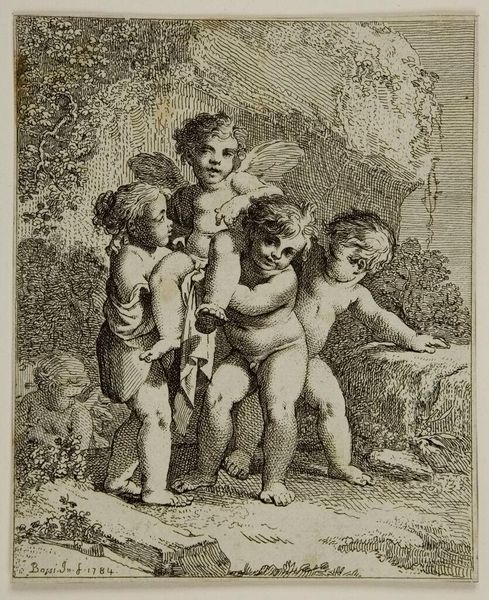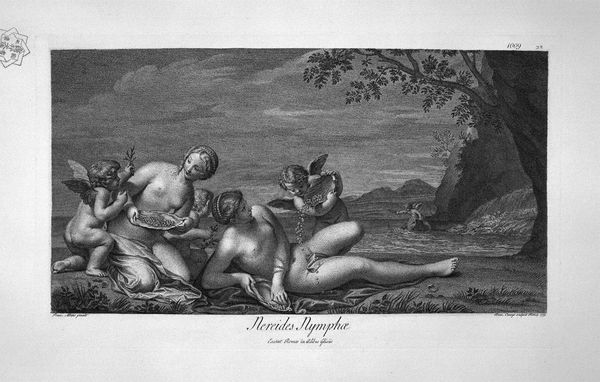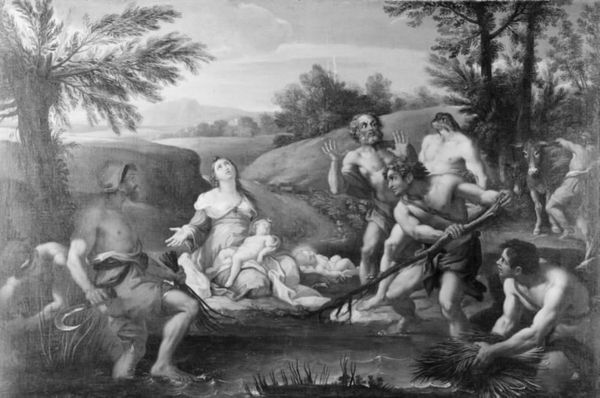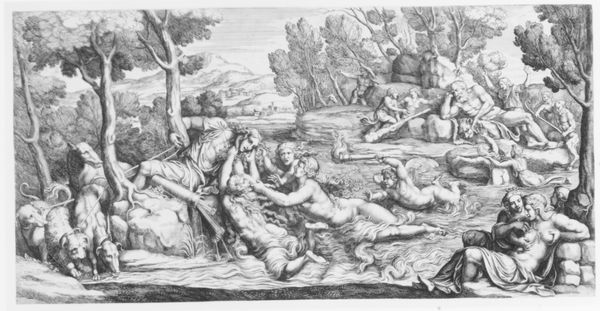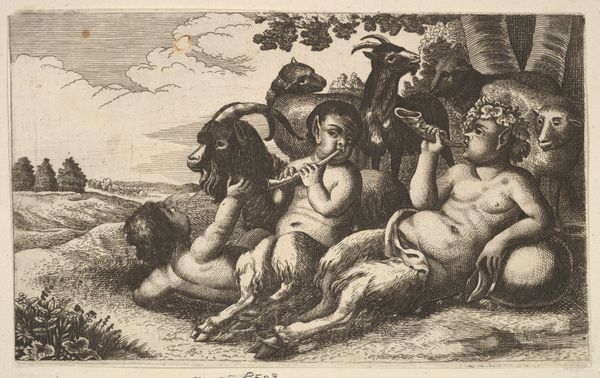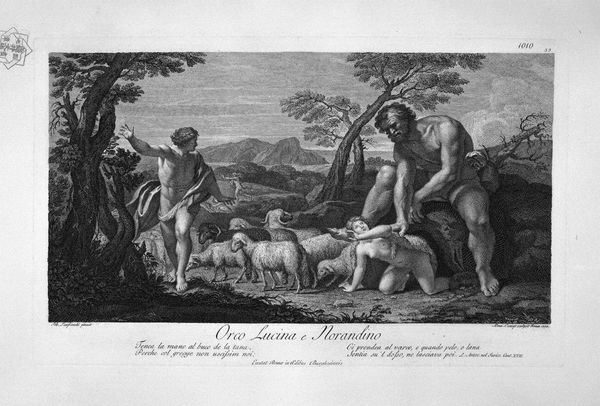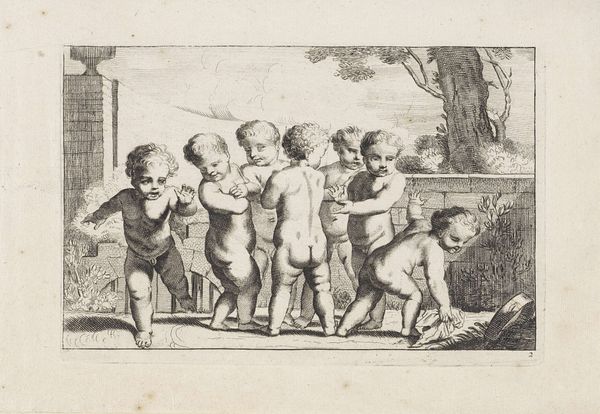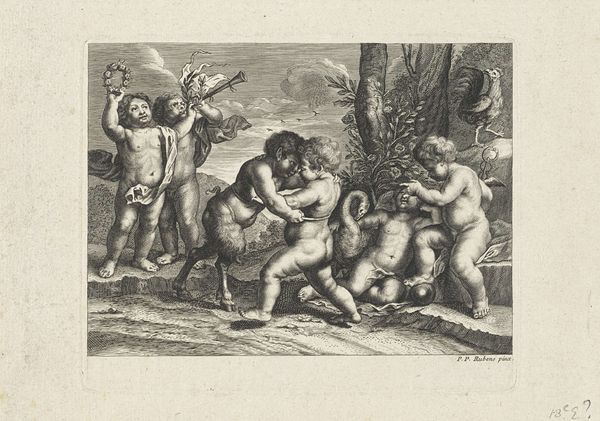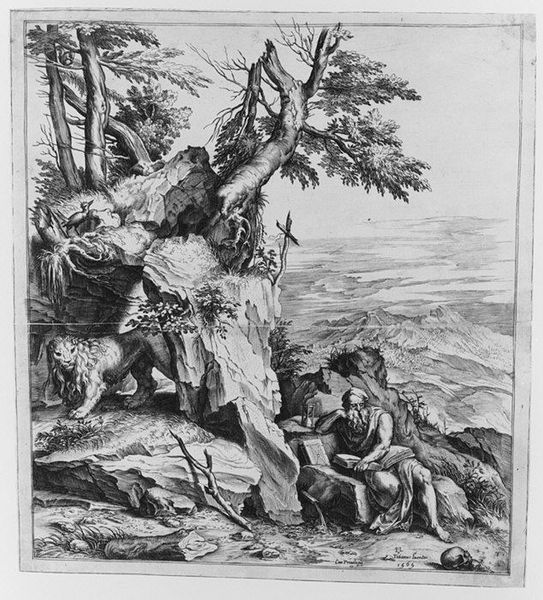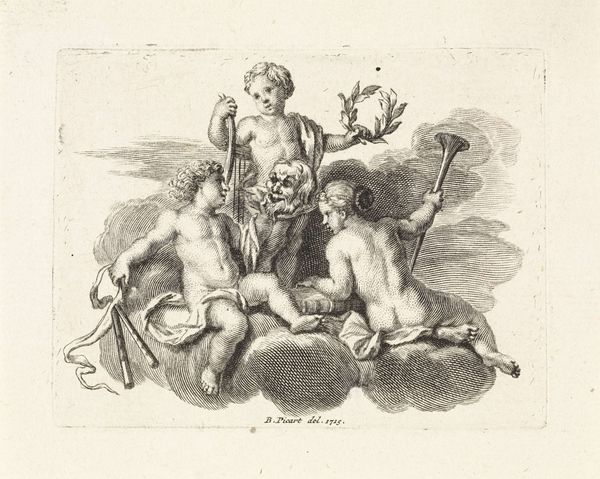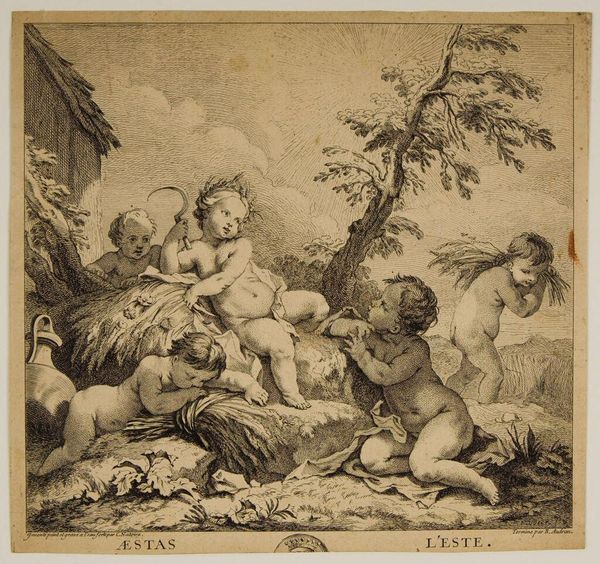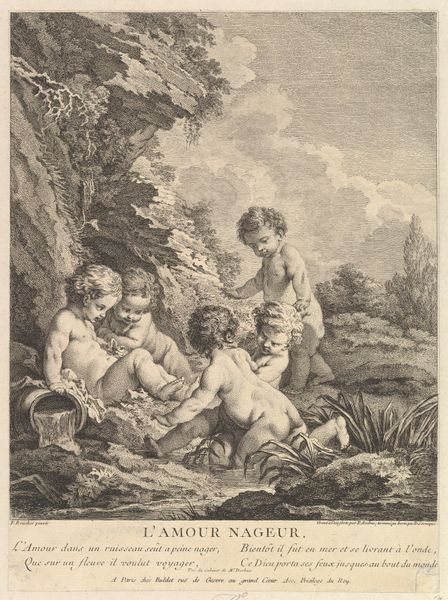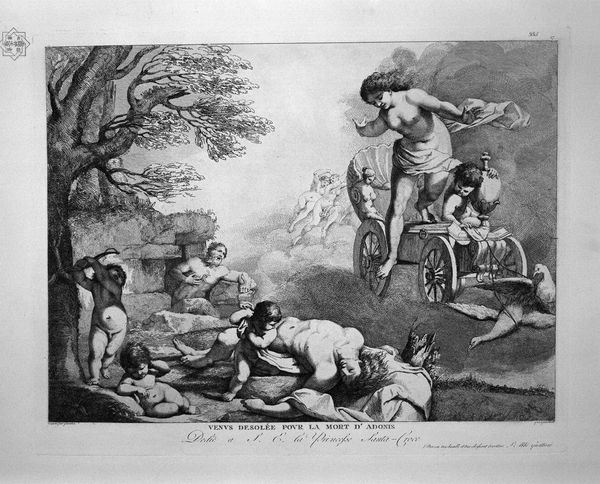
print, engraving
#
allegory
#
baroque
# print
#
figuration
#
genre-painting
#
engraving
Copyright: Public domain
Editor: This is "Joke of Putti," an engraving by Giovanni Battista Piranesi. It's playful – cupids frolicking around a fountain. The overall composition seems a little unbalanced though, almost like the cherubs are pulling in opposite directions. How do you interpret this work? Curator: Piranesi, though known for his grand architectural etchings, also engaged with more whimsical themes. Beyond the surface-level "joke", I think it's crucial to consider what these seemingly innocent cherubs might represent within a broader historical and social context. Editor: What do you mean? Curator: Well, the putto, derived from classical art, often symbolized divine love, but their use evolved. During Piranesi's time, images of children often functioned as symbols of innocence but also as subtle reflections of power dynamics, class structures, or even colonialist attitudes. Do these cherubs seem truly free, or are they contained, controlled within the pictorial space, performing for a viewer? Editor: I hadn't considered it that way. The cupid with the bound bird, that definitely suggests constraint. Curator: Exactly! Consider, too, how the classical form of the vase contrasts with the chaotic activity of the figures. It seems to underscore the tension between established order and unbridled… perhaps even reckless… youthful energy. Editor: So, the “joke” might be more pointed than just a light-hearted scene? Curator: Precisely. It invites us to question what's being normalized through idealized portrayals of childhood, especially in relation to structures of power. We're not simply viewing cute cherubs; we're witnessing a complex interplay of cultural ideals and perhaps even subtle critiques. Editor: I see. I'll definitely look at cherubs differently from now on. Thanks! Curator: It’s about digging deeper, seeing beyond the surface, and considering art as a reflection of its time, constantly interrogating and informing the present.
Comments
No comments
Be the first to comment and join the conversation on the ultimate creative platform.
